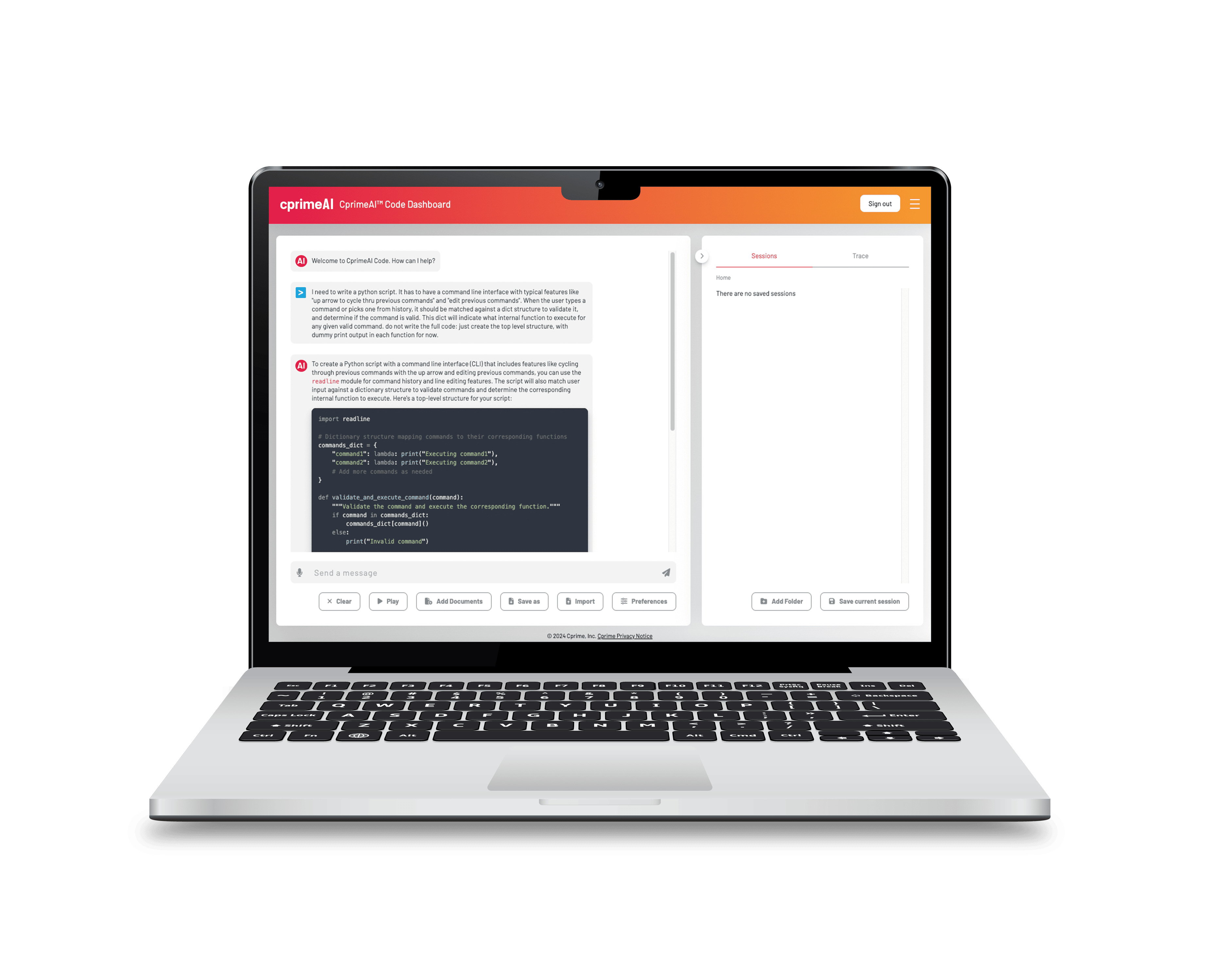IT resilience FAQs addressed in this article:
-
What is the strategic importance of developer empowerment in IT resilience? – The strategic importance of developer empowerment in IT resilience lies in fostering innovation, agility, and the ability to adapt swiftly to technological advancements and market dynamics.
-
How does developer empowerment impact business outcomes? – Developer empowerment accelerates innovation, enhances application quality and user experience, increases operational efficiency, and fosters a culture of continuous improvement, directly impacting business outcomes.
-
What are key steps in the roadmap to empowering developers? – Key steps include fostering a culture of innovation, investing in continuous learning, providing access to modern tools, implementing Agile and DevOps practices, encouraging autonomy, and embracing cloud-native technologies.
-
How can organizations harness developer empowerment for future-proof IT resilience? – Organizations can harness developer empowerment for future-proof IT resilience by leveraging generative AI, adopting a cloud-first approach, emphasizing security and compliance, promoting sustainability, and fostering lifelong learning.
-
Why is a cloud-first approach essential for IT resilience? – A cloud-first approach is essential for IT resilience because it provides a flexible and scalable infrastructure, enabling rapid development, testing, and deployment of applications to respond effectively to changing business needs.
-
How does promoting sustainability and ethical development contribute to IT resilience? – Promoting sustainability and ethical development contributes to IT resilience by ensuring applications are not only efficient but also ethically sound, optimizing resource usage, and maintaining customer trust and corporate responsibility.
-
What role does continuous learning play in developer empowerment and IT resilience? – Continuous learning is crucial in developer empowerment and IT resilience as it ensures developers stay updated with the latest technologies and practices, keeping the organization at the forefront of innovation and adaptability.
Developers and DevOps teams must stand at the forefront of navigating through the complexities and opportunities that come with digital transformation. As businesses strive to adapt and thrive in this dynamic environment, the role of these tech professionals has never been more critical. The surge in technological advancements, from generative AI to edge computing, has not only expanded the horizons of what’s possible but also introduced a new set of challenges.

Amidst this backdrop, the concept of IT resilience emerges, guiding organizations towards a future where they are not just surviving but flourishing. Empowering developers is not merely a strategy; it’s a necessity that paves the way for innovation, agility, and, ultimately, business transformation. As we delve into the intricacies of this journey, we uncover the essence of developer empowerment and its profound impact on achieving IT resilience in this digital age.
The New Era of IT: Navigating Through Challenges and Seizing Opportunities
The pace of technological evolution is not just rapid, it’s unprecedented. According to Couchbase, Inc.’s research, despite shifting digital transformation goals, enterprises continue to heavily invest in IT modernization, with an average planned investment of $33 million in the next 12 months. This investment is a testament to the critical role that developers and DevOps teams play in navigating through the complexities and opportunities that come with digital transformation.
The research highlights that nearly 60% of enterprises surveyed reported that their key modernization goal is to improve business resilience and efficiency in the face of the evolving global economy. This focus on operational efficiency is influencing how global enterprises invest in digital transformation initiatives, underscoring the importance of IT resilience in today’s business strategies.
As technological advancements such as generative AI and edge computing open new frontiers for business operations and customer engagement, they also introduce a heightened level of complexity. This complexity demands a sophisticated understanding and nimble adaptation from developers and DevOps teams, who are at the forefront of translating these technologies into tangible business solutions.
The survey of 600 senior IT decision-makers revealed that 78% confirm their main priorities for transformation have changed in the last three years, with 54% stating their digital transformation focus has become more reactive to market changes and customer preferences. This shift towards a more agile and responsive approach is crucial for businesses aiming to build resilience and weather a dynamic economy.
Furthermore, Couchbase’s research emphasizes the spotlight on developer productivity, with digital transformation projects being a key focus. Pressure from developers on their organizations to support agile development and innovation, along with empowering developers to build more applications to meet customer needs, were identified as the top drivers behind individual transformation projects. This shift in focus towards empowering developers as the top IT investment priority highlights the strategic importance of developer empowerment in achieving IT resilience.
In this new era of IT, the challenges are as vast as the opportunities. However, the key to unlocking these opportunities lies in empowering developers. By equipping them with the right tools, technologies, and support systems, businesses can harness the full potential of their development teams. This empowerment not only accelerates the pace of innovation but also builds a foundation for IT resilience, enabling organizations to adapt to changes swiftly and effectively.
The Strategic Imperative of Developer Empowerment
This focus on developer empowerment is driven by the recognition that developers are the linchpins in the machinery of digital transformation, innovation, and competitive differentiation. As businesses navigate through the complexities of integrating new technologies and responding to shifting market demands, the ability to unleash the full potential of their development teams becomes a critical success factor.
Empowering developers is about more than just providing access to the latest tools and technologies; it’s about creating an environment that fosters creativity, encourages experimentation, and supports continuous learning and growth. In such an environment, developers are not only equipped but also motivated to explore new ideas, push boundaries, and drive innovation. This culture of empowerment is essential for fostering a mindset of resilience, where challenges are viewed as opportunities for growth and learning.

Moreover, developer empowerment directly contributes to the simplification of the technology stack and the streamlining of development processes. By reducing complexity and eliminating barriers to innovation, organizations can accelerate the delivery of new applications and services. This not only enhances developer productivity but also improves application performance and reliability—key components of IT resilience.
Simplified, trustworthy data architectures and cloud-native solutions are examples of how organizations can support their developers, enabling them to focus on innovation rather than getting bogged down by technical debt or legacy systems.
The strategic imperative of developer empowerment is further underscored by the need for agility and rapid adaptation in the face of change. The ability to pivot quickly and effectively in response to new opportunities or threats is a hallmark of IT resilience. Empowered developers, with their deep technical expertise and creative problem-solving skills, are uniquely positioned to help organizations navigate these changes, turning potential disruptions into avenues for innovation and growth.
The Impact of Developer Empowerment on Business Outcomes
When developers are given the freedom, tools, and support they need, the benefits extend far beyond the IT department, influencing every facet of the organization. This empowerment leads to a more innovative, agile, and resilient IT infrastructure, which in turn drives significant business advantages.
Accelerated Innovation and Time-to-Market
One of the most immediate impacts of developer empowerment is the acceleration of innovation and reduction in time-to-market for new products and services. Empowered developers can leverage their skills and creativity to explore new technologies and approaches, leading to breakthrough solutions. This rapid innovation cycle enables organizations to respond swiftly to market opportunities and customer needs, maintaining a competitive edge in a fast-paced digital economy.
Enhanced Application Quality and User Experience
Developer empowerment also plays a crucial role in enhancing application quality and user experience. With access to modern development tools and practices, developers can build more robust, scalable, and secure applications. This not only improves the end-user experience but also reduces downtime and maintenance costs, contributing to overall business resilience.
Increased Operational Efficiency
Operational efficiency is another critical area where developer empowerment makes a significant impact. By streamlining development processes and adopting Agile methodologies, organizations can achieve faster deployment cycles and more efficient use of resources. This efficiency not only reduces costs but also allows IT teams to focus on strategic initiatives that drive business growth.
Fostering a Culture of Continuous Improvement
Perhaps one of the most lasting impacts of developer empowerment is the cultivation of a culture of continuous improvement. In an environment where experimentation and learning are encouraged, organizations can foster a mindset of innovation and resilience. This culture not only supports ongoing development and refinement of products and services but also helps attract and retain top talent, further strengthening the organization’s ability to adapt and thrive in a changing landscape.
By prioritizing the needs and potential of their development teams, organizations can unlock a wealth of benefits that drive growth, innovation, and resilience.
The Roadmap to Empowering Developers
Empowering developers is a strategic imperative for organizations aiming to achieve IT resilience and drive business transformation. However, realizing this goal requires a deliberate approach that encompasses various facets of the development environment. Here’s a roadmap to guide organizations in empowering their developers effectively:
Foster a Culture of Innovation and Collaboration
Creating an environment that encourages innovation, experimentation, and collaboration is foundational to developer empowerment. This involves not just providing the right tools, but also cultivating a culture where failure is seen as a learning opportunity. Encouraging cross-functional collaboration further enhances creativity and breaks down silos, leading to more holistic and innovative solutions.
Invest in Continuous Learning and Development
The tech landscape is constantly evolving, making continuous learning essential for developers to stay ahead. Organizations should invest in training programs, workshops, and access to learning resources to help developers acquire new skills and knowledge. Encouraging participation in conferences, hackathons, and community events can also provide valuable learning and networking opportunities.
Provide Access to Modern Tools and Technologies
Access to the latest tools and technologies is crucial for developers to build high-quality, innovative applications efficiently. This includes everything from integrated development environments (IDEs) and code repositories to cloud platforms and DevOps tools. By equipping developers with state-of-the-art tools, organizations can streamline development processes and enhance productivity.
Implement Agile and DevOps Practices
Adopting Agile methodologies and DevOps practices can significantly improve the speed and quality of software development. These practices promote a more iterative development process, continuous integration and delivery (CI/CD), and closer collaboration between development, operations, and other teams. This not only accelerates time-to-market but also ensures that applications are built with a focus on user needs and quality.
Encourage Autonomy and Ownership
Empowering developers also means giving them autonomy in their work and ownership of their projects. This involves trusting developers to make decisions, solve problems, and drive projects forward. Autonomy fosters a sense of responsibility and pride in their work, leading to higher motivation and job satisfaction.
Embrace Cloud-Native and Microservices Architectures
Leveraging cloud-native technologies and microservices architectures can provide developers with the flexibility and scalability needed to build and deploy applications more efficiently. These technologies support a more modular and distributed approach to application development, enabling faster updates, better scalability, and improved resilience.
By following this roadmap, organizations can unlock the full potential of their development teams, driving innovation, agility, and IT resilience in the digital age. Empowered developers are key to navigating the complexities of today’s technological landscape and achieving long-term business success.
Harnessing Developer Empowerment for Future-Proof IT Resilience
As we look towards the future, the importance of developer empowerment in achieving IT resilience and driving business transformation becomes increasingly evident. Here’s how organizations can harness developer empowerment to build a resilient IT infrastructure that not only withstands future challenges but also seizes new opportunities for growth.
Leveraging Generative AI and Advanced Technologies
The rise of generative AI and other advanced technologies presents a unique opportunity for developers to enhance their productivity and creativity. By integrating these technologies into the development process, organizations can automate routine tasks, generate innovative solutions, and accelerate the ideation phase. This not only frees up developers to focus on more complex and value-added activities but also fosters an environment of continuous innovation.
Adopting a Cloud-First Approach
A cloud-first approach is essential for building a flexible and scalable IT infrastructure. By leveraging cloud services and platforms, developers gain access to a wide array of resources and tools that enable rapid development, testing, and deployment of applications. This approach supports a more agile development cycle, allowing organizations to respond more effectively to changing business needs and market conditions.
Emphasizing Security and Compliance
In an era where data breaches and cyber threats are increasingly common, ensuring the security and compliance of applications is crucial. Empowering developers with the knowledge and tools to incorporate security best practices into the development process is key. This includes adopting a “security by design” approach, conducting regular security audits, and ensuring compliance with relevant regulations. By prioritizing security, organizations can protect their assets and maintain customer trust.
Promoting Sustainability and Ethical Development
As societal expectations around corporate responsibility grow, promoting sustainability and ethical development practices becomes increasingly important. Empowering developers to consider the environmental impact of their work and to develop solutions that are not only efficient but also ethically sound is essential. This includes optimizing resource usage, minimizing waste, and ensuring that applications are accessible and inclusive.
Fostering a Culture of Lifelong Learning
The rapid pace of technological change necessitates a culture of lifelong learning within organizations. Encouraging developers to continuously update their skills and knowledge ensures that the organization remains at the forefront of innovation. This can be achieved through ongoing training programs, knowledge-sharing sessions, and encouraging participation in industry events and forums.
Empowered developers are the cornerstone of a resilient and agile IT infrastructure, driving business transformation and ensuring long-term success in an ever-evolving digital landscape. Are you ready to empower your development team to reach new heights? Speak to a DevOps consultant to discuss next steps!















